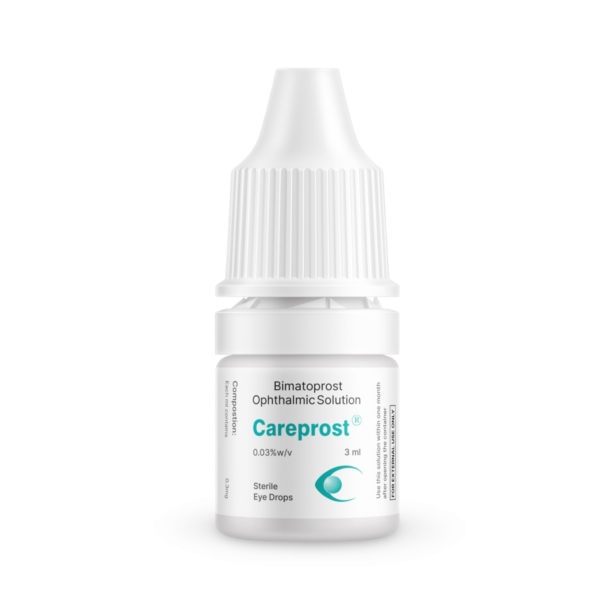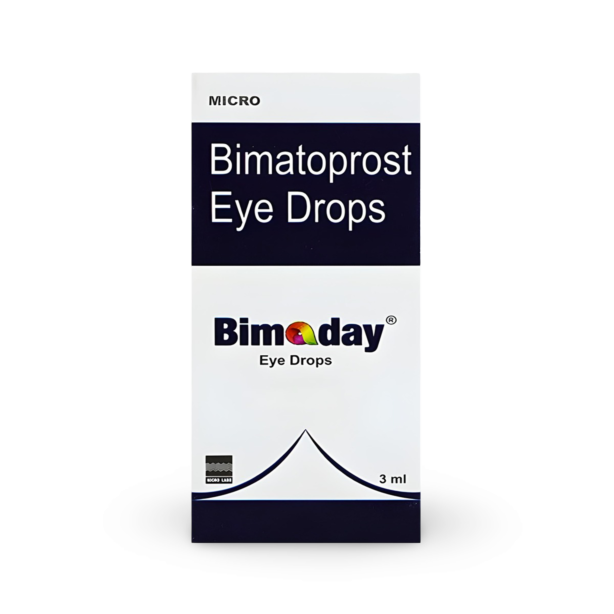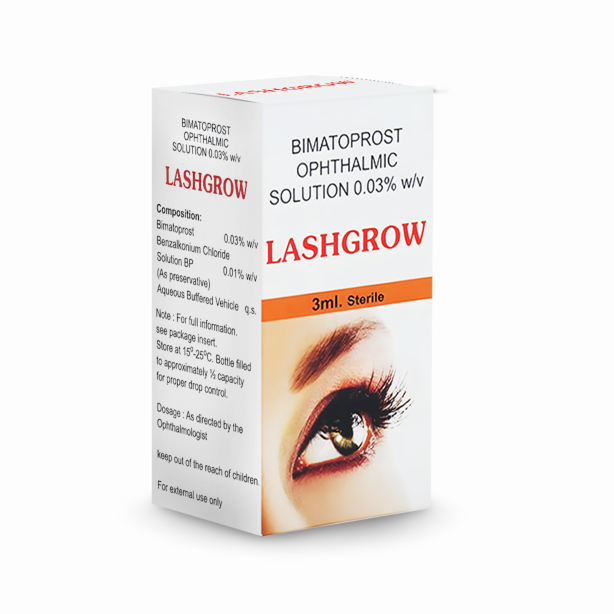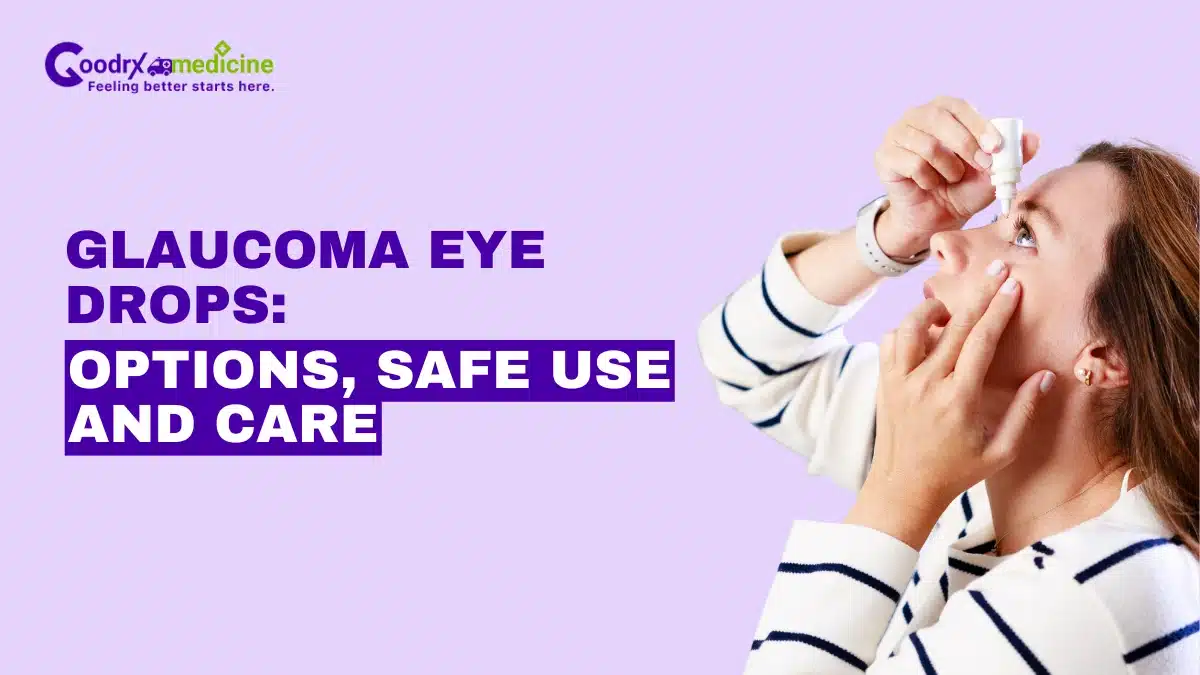Glaucoma is one of the leading causes of blindness worldwide. It develops silently, often without pain or obvious warning signs, until vision loss has already begun. Glaucoma management involves lowering Intraocular Pressure (IOP) to protect the optic nerve. The most common and effective way to achieve this is through the regular use of Glaucoma eye drops.
For patients diagnosed with Glaucoma, eye drops are very important in the long term for preserving sight. Yet, the variety of available options, the importance of proper use, and the need to manage expectations can be overwhelming.
This article explains everything you need to know about Glaucoma eye drops: how they work, the different types available, how to use them correctly, and what to expect once you begin treatment.
Types of Glaucoma eye drops
In Glaucoma, when the fluid inside the eye (aqueous humor) does not drain properly, pressure builds up and damages the optic nerve. This damage is permanent and leads to gradual vision loss.
Using eye drops consistently is often the first line of treatment before surgery or laser therapy is considered. For many patients, eye drops alone can control pressure and prevent vision loss for years.
Glaucoma medications come in different categories, depending on their mechanism of action. Below is a list of commonly used salts (active ingredients) and how they work:
Save up to 90% on your medicine bills

Careprost 3 ml of 0.03%

Bimat 0.03% w/v

Bimaday 3 ml

Lashgrow 3 ml
Beta blockers
Beta blockers like Timolol, Betaxolol, Levobunolol, and Carteolol reduce the production of aqueous humor. They are generally well tolerated, but can affect heart rate, blood pressure, and breathing in sensitive patients. These are used once or twice daily.
Prostaglandin analogues
These increase the outflow of aqueous humor through the uveoscleral pathway. They are highly effective, often the first choice. However, they may cause redness, eyelash growth, or darkening of the iris in some people.
They are used once daily at night. Examples (generic names): Latanoprost, Travoprost, Bimatoprost, Tafluprost.
Alpha Adrenergic Agonists
These include Brimonidine and Apraclonidine. They reduce aqueous production and increase drainage.
They are used two to three times daily. Possible side effects include dry mouth, fatigue, or allergic reaction with long-term use.
Carbonic Anhydrase Inhibitors (CAIs)
These reduce aqueous humor production. They may cause a bitter taste, stinging, or discomfort. Oral forms can cause tingling sensations or kidney-related effects.
They are typically used two to three times daily (eye drops). Examples: Dorzolamide, Brinzolamide, Acetazolamide (oral form also available).
Combination eye drops
These help combine the benefits of two medicines to improve effectiveness and reduce the need for multiple bottles. They are convenient but can increase side effects if not tolerated.
The frequency of use depends on formulation. Examples: Timolol + Dorzolamide, Timolol + Brimonidine, Latanoprost + Timolol
Rho Kinase Inhibitors (ROCK)
Rho Kinase inhibitors like Netarsudil are a newer option and improve fluid drainage by relaxing the eye’s trabecular meshwork. They are used once daily.
It may sometimes cause eye redness or irritation in some patients.
How to use Glaucoma eye drops
Correct use of Glaucoma eye drops is important for them to work. Many patients unintentionally reduce the effectiveness by using them incorrectly. Here is a step-by-step guide:
- Wash your hands before use. Always clean your hands to avoid infection.
- Shake the bottle (if needed). Some suspensions require gentle shaking. Check instructions.
- Tilt your head. Look up and pull down your lower eyelid to form a small pocket.
- Instill the drop. Hold the bottle above your eye without touching the tip to your eye or lashes. Squeeze one drop into the pocket.
- Close your eyes gently. Do not blink rapidly. Instead, close your eyes softly for 1–2 minutes.
- Press the inner corner (punctal occlusion). Using a finger, press the corner of your eye near the nose. This prevents the drop from draining into the throat and reduces side effects.
If you are prescribed more than one type of drop, wait at least 5 minutes before the next drop to prevent washing out the first.
What to expect after starting treatment
Glaucoma eye drops do not improve eyesight. Their role is preventive, which means they protect remaining vision by lowering pressure.
You can experience some mild side effects like tinging, redness, blurred vision, darkening of iris or eyelid skin (with prostaglandins). Some might experience systemic effects like fatigue, low heart rate, and shortness of breath (mainly with beta blockers).
Glaucoma requires lifelong treatment. Stopping eye drops without a doctor’s advice can cause pressure to rise again, leading to optic nerve damage. Even with consistent use, pressure should be checked regularly. Eye drops may need adjustment over time if pressure is not well controlled.
Lifestyle and supportive measures
While eye drops are the primary treatment, supporting your eye health can also help:
- Regular eye check-ups are important for monitoring progress.
- A diet containing leafy greens, omega-3 fatty acids, and antioxidants.
- Avoid excessive caffeine, as it may increase IOP temporarily.
- Exercise helps general health, but avoid head-down yoga poses that raise eye pressure.
- Manage other health conditions like High Blood Pressure, Diabetes, and Sleep Apnea that can influence Glaucoma progression.
Conclusion
Glaucoma eye drops remain the most reliable and effective treatment for controlling eye pressure and protecting vision. They do not reverse damage that has already occurred, but when used correctly and consistently, they slow or even stop further vision loss.
Commonly prescribed options include Prostaglandin Analogues such as Latanoprost, Travoprost, Bimatoprost, and Tafluprost; Beta Blockers like Timolol, Betaxolol, Levobunolol, and Carteolol; Carbonic Anhydrase inhibitors such as Dorzolamide, Brinzolamide, and Acetazolamide; Alpha Adrenergic Agonists like Brimonidine and Apraclonidine; as well as newer agents such as Netarsudil and various combination drops.
Correct use, regular monitoring, and adherence to treatment are essential for long-term management. With consistent care and medical supervision, eye drops remain an effective approach to controlling Glaucoma.

Frequently Asked Questions
Can Glaucoma eye drops be used during pregnancy?
Glaucoma management in pregnancy requires caution. Some eye drops may pose risks to the fetus, while others can be safer alternatives. Doctors often adjust treatment, reduce dosage, or recommend non-drug options during this period. It is important to consult an ophthalmologist before continuing or starting eye drops.
Do Glaucoma eye drops interact with other medications?
Yes, certain Glaucoma eye drops can interact with systemic medications. For example, beta-blocker drops may enhance the effects of blood pressure or heart medicines. Always inform your doctor about all prescriptions, over-the-counter drugs, and supplements you take so they can choose the safest and most effective treatment.
How are Glaucoma eye drops stored?
Most Glaucoma eye drops should be stored at room temperature, away from direct light and moisture. Some formulations may require refrigeration before opening. Always check the packaging for specific instructions. Keeping the bottle clean and tightly closed helps maintain sterility and ensures the medicine works as intended.
What happens if I miss a dose of my Glaucoma eye drops?
If you forget a dose, apply it as soon as you remember. However, if it is time for your next dose, skip the missed one and continue as usual. Do not double up to compensate. Regular adherence is key, so consider setting reminders or alarms.
When referencing outside resources, GoodrxMedicine always provides full citations. To learn more about the measures we use to maintain the quality of our content, please review our Content Information Policy.











